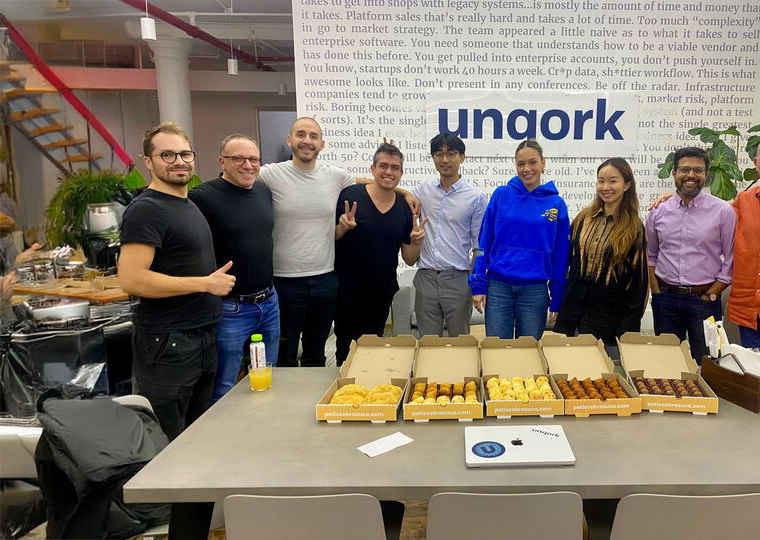EY Associate Technical Lead Kamalanchali Asokan talks building a policy administration system for underwriters without writing code
As a back-end software engineer with over six years of Java and RESTful Web Services experience, EY Associate Technical Lead Kamalanchali Asokan knows a lot about working with huge amounts of code. Having been with EY for two years and building within the Unqork platform for the past six months, her Java days are behind her. Now the development lead for EY’s Unqork projects, Kamalanchali walks us through her current client project and discusses the benefits of Unqork’s no-code platform compared to her time spent coding.
What projects are you currently working on?
Kamalanchali: We are in the middle of developing a policy administration platform for our client who is a top-20 P&C specialty carrier using the Unqork platform. The application will be for their agents and underwriters to enable them to more quickly issue the right policy to their clients—the aim is to process the application within 24 hours.
This application uses multiple external interfaces, timers, and various role players. There is also a dashboard to see a graphical overview of metrics.
EY doesn’t have any interaction with the insurance client’s legacy system, so we are maintaining the whole database and workflow inside Unqork. There are multiple integrations where we call in various address-related APIs like Bing and Athenium.
You’re relatively new to Unqork. What was learning how to use the platform like?
I began with the Unqork Bootcamp and just started learning from there. Then I moved on to get my Associate Configurator certification. When the projects actually started and there were real-time requirements, it was difficult initially because I had no prior experience to know, for example, which workflow would be best to choose. After one or two months, I started getting a hang of the flow and it became really interesting from there.
How has it been transitioning from your coding background to working with no-code?
In Java, you can only see everything in JSON and text. It’s far easier to design your intent using Unqork —you just have to say ‘trigger’ and then the flow runs.
In the course of a few months, I explored Unqork and found huge differences in the developmental process as compared to previous technologies I have worked on. In Java, the codebase is huge. In order to even start to code, you have to configure the JDKs, set up a database connection, and then set up a server-side connection. The setup alone takes a minimum of two or three days, sometimes even a week. With Unqork, you can start right away. That part really impressed me.
In Java, you can only see everything in JSON and text. It’s far easier to design your intent using Unqork —you just have to say ‘trigger’ and then the flow runs.
One more thing I really liked, and it was actually one of my favorites, was the iterations. No matter how many records you have, you can simply create a field using Data Workflow and you don’t need to worry about the loop. Typically, if you want to modify or rename the key, then we have to write for a loop, then start the iteration from this and that index, and only then can we make the change. With Unqork, you don’t have to worry about doing any of that. Whatever we want in an array, we can simply modify the field using Data Workflow components.
What do you like about Unqork?
Mainly the speed of development and not needing to have a separate developer to support both front-end and back-end needs.
When I was a back-end developer, I only cared about the data. I never really had the mentality to visualize how the end-user will be using the application, as I never had to work like that. But now I can truly connect with the application and think like the user as I build.
The first thing that impressed me was that we don’t really have to spend time on setting up the workspace to start coding. We can see the screen as we start developing. We don’t see anything in text or JSON, and we don’t have to wait for a front-end person to integrate something. When I was a back-end developer, I only cared about the data. I never really had the mentality to visualize how the end-user will be using the application, as I never had to work like that. But now I can truly connect with the application and think like the user as I build.
This opens up a lot of new ideas. Similarly, data can be maintained inside our application and no extra setup is needed. Working with complicated logics is also easier. Those iterations and loops I previously mentioned are now much quicker to build as it reduces the complexity of building the loop in the first place, as it is a simple component in a flowchart. Building a timer task is so handy, too.
Any tips for Creators beginning their codeless building journeys?
I am still a new user of Unqork, so I’m learning from the SMEs and still soaking in whatever senior developers can teach me! The Unqork Community Hub has also helped a lot.
I am at a point where I don’t want to go back to building codes again. I just love working in Unqork and I have to thank EY for introducing me to it.





